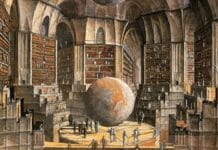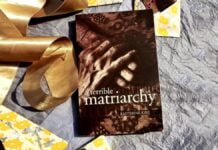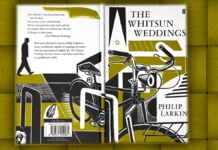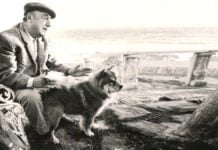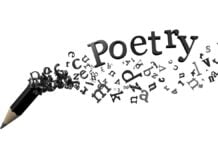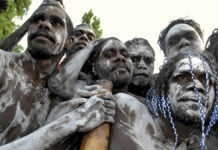T S Eliot’s The Waste Land is considered one of the most important poems of the 20th century and a modernist masterpiece. A dramatic monologue that changes speakers, locations, and times throughout, The Waste Land draws on a dizzying array of literary, musical, historical, and popular cultural allusions to present modern life’s terror, futility, and alienation in the wake of World War I.
Theme
The theme of The Waste Land is complex and composite. It deals with the diseases of contemporary society and evils lurking at the core of modern civilisation. The poem contains a clear picture of the collapse of civilisation. The civilisation of the cities is rootless. The people there have no tradition. They are just masses from different sections and groups without any unifying culture of ideas. The towers of Eden’s Alexandria, Vienna, and London are falling. The only way to save urban civilisation is through suffering, prayer, and sacrifice.
The Waste Land highlights modern civilisation’s social, cultural and moral decay due to commercialising life, where everything is for sale. There is a question of profit and loss, even in love. People have lost faith and moral values. They are suffering from various types of mental illnesses due to the worries, anxieties, and challenges of modern life. Thus, the poem’s theme is essentially man’s spiritual experience. At the poem’s core is the Christian doctrine of rebirth through prayer and suffering, thus evoking the theme of resurrection.
The poem’s last section, “What the Thunder Said”, contains the substance of Eliot’s thoughts. The poet suggests that the rebirth of civilisation is possible only through the revival of faith. He illustrates this point through the successful journey of the Knight who reached the Chapel Perilous. The story of the two pilgrims and Christ also shows how faith can lead to the success of mankind.
The poem ends on a note of hope. The poet believes that all is not lost and there are still chances for the salvation of mankind. It is only possible if each individual begins looking after their self-purification. In the end, the poet concludes that he must start the process of self-purification from himself. He decides to follow the three principles of spiritual rebirth in his own life, hoping it will lead to a better future.
Tone
The tone of the poem is mournful, nostalgic, and hopeful. The poem sounds mournful for the loss of spirituality and high culture in modern times. It mourns the materialistic tendencies of men towards life and other human beings. At the same time, it remembers the glorious past days with a feeling of nostalgia. It reflects the difference between the past’s organic society and the present’s fragmented society. However, the poem is not entirely pessimistic. It has the elements of hope connected with rebirth and resurrection.
Structure
Eliot has employed a fragmented form for this poem to parallel the theme of fragmentation and disjointedness. The poem’s structure plays a significant part in enhancing its overall greatness. With the development of thought, the poem digs deeper and deeper into the ailments of the modern age.
The poem is divided into five sections, each representing one of the five basic elements. The five sections of the poem are like a symphony of five movements. The musical quality of The Waste Land has compelled I A Richards to remark about the poem as a ‘music of ideas’. Moreover, at the core of the poem’s structure lies the concept of the law of nature, i.e., birth-death-rebirth.
Eliot has made skilful use of short and long lines. He has also modified conventional iambic meters according to the need of context. The rhyme scheme is not regular. Words and phrases are repeated to emphasize life’s mental blankness and emptiness. The use of alliteration and onomatopoeia intensifies the musical effect of the poem.
The poem also contains different kinds of music. For instance, the music of a church clock is mixed up with the gay tune of the mandoline played in the pub. Then there is the music of water —’Drip drop drip drop drop drop drop’ —which is different from the music of the grass singing in the wing.
In the poem, there is also a shift in time and setting. For example, Eliot suddenly jumps from the Italian shore to Queen Victoria Street in London. Moreover, all the quotations from Latin, French, Italian, and other writers are appropriate to the poem’s purpose. The clever use of allusions, symbols and various devices has rendered the poem with vitality and strength.
Eliot’s language is often ambiguous and fragmented, mirroring the fractured state of modern society. He uses a variety of literary devices, including metaphor, simile, and symbolism, to create a rich and evocative text.
Parallelism of the Past and the Present
In The Waste Land, Eliot has made several references to the past to highlight the similarities of the problems of both ages. He has also shown how past experiences can help in finding solutions to the issues of the modern world.
Eliot has made references to the past through the utilization of symbols and allusions to various myths and legends. He wants the reader to understand the spiritual barrenness and paralysis of the modern world by comparing it with similar conditions in the history of humanity. This is because the history of civilization contains several lessons for mankind. For instance, King Oedipus and Fisher’s stories show that their land suffered from drought and barrenness due to sin and moral laxity.
One parallelism in the poem shows that Cleopatra’s love was robust and intense. Her love involved her whole being, and she was even ready to suffer for her love. Whereas, in today’s society, we see that the typist girl has no emotional involvement in the sexual act. She takes it as a mere routine act devoid of feeling or attachment. This parallelism of the past and the present makes the sterility and barrenness of modern civilization rather more vivid and poignant.
Eliot’s comparison of the present and the past is meant to underline the need for faith and mortality. He is primarily concerned with man’s spiritual condition and finds that the past has an edge over the present.
Spiritual Desolation
A pervasive sense of spiritual emptiness and desolation marks The Waste Land. Eliot portrays a world that has lost its moral and spiritual bearings, where traditional values and beliefs have disintegrated. The title suggests a barren landscape, reflecting the aftermath of war and the cultural decay of the time.
The modern man is breathing and walking but lacks the spiritual element. He is spiritually dry. He cannot interact with other humans in the old manner. His motives in modern times are greed and lust. The materialistic approach of modern times has left him hollow from the inside. His love has also become limited to physical desires only. This idea of spiritual dryness is manifested in many parts of the poem. The speaker speaks of the barren land and how the modern man cannot appreciate something as beautiful as the song of a nightingale. He cannot feel anything the way people did in the past.
Loss of High Culture
Modern man does not have faith in the culture and traditions of his past. He wants to avoid revisiting the past values, which resulted in a horrific war. The centres around which the society stood are no longer acceptable to him. This theme occurs many times in the poem. There are many allusions to the works of the glorious past age, which contrast the gloom of the present with the joy of the past.
The speaker laments how the high standards of European culture are lost, and the modern man has died spiritually. Artificiality and materialism have taken the place of the originality of the high culture of the past.
Death
Death soars over the poem. The reader is led towards death in almost every paragraph of the poem. Death is not only physical death but is also spiritual and moral. The people of the modern world are breathing but are dead in this life of theirs. They have lost the essence of life. The Sibyl of Cumae appears at the start of the poem. She has been granted eternal life. However, she is fed up with this life and wants to die. Her life is full of miseries, and she has no joy. The same is the case with the rest of the characters in the poem.
The typist engages in sexual intercourse but has no emotional attachment to the person. Similarly, the wealthy woman at the start of the second section shows no signs of feelings towards her lover. In this way, the different shapes of death remain the dominant theme throughout the poem.
Rebirth
Throughout the poem, there are instances of resurrection and rebirth. The modern man has died a spiritual death. However, the speaker has hope that resurrection is coming close. Soon, the lost generation will retain their lost values and attain normality. The image of Christ is sprinkled throughout the poem, symbolising resurrection and rebirth.
The land described in the poem is barren and dry. There is no water to give birth to new life. Furthermore, Fisher King fishes desperately to regain his potency. These images bring hopelessness to the poem but are countered by the hopeful images of rebirth.
Physical Love
There are a lot of love relations in the poem. The allusion to the story of Philomel sets the tone for this theme. At the start of the second section, the aristocratic lady waits for her lover. Similarly, the young typist girl waits for her dull lover in her room. Furthermore, a love affair involving the hyacinth girl is narrated. However, the common element between all these love relations is that they lack spirituality. Their love is only limited to physical needs and lust. They do not enjoy the communion of souls. Instead, it is just that their bodies meet and depart straight away. Everything about their love is mechanical and artificial. In this manner, the speaker reflects on the natural love in modern times.
Infertility
The title of the poem suggests that it is about a waste of land which is barren and dry. The same motif reoccurs in many instances in the poem. In the second line of the poem’s first section, the speaker refers to the land as dead. The water of the Thames is also described as filthy. Rats are coming out of it. Similarly, there are other instances which stress the infertility of the modern man.
Fragmentation and Disintegration
The poem’s structure is intentionally fragmented, with different voices, perspectives, and allusions woven together. This fragmentation mirrors the disintegration of cultural, social, and individual identity. Eliot employs a collage of artistic and literary references to depict a world in which cohesive narratives and meanings have broken down.
Desire and Alienation
The poem has a pervasive theme of unfulfilled desires, often leading to alienation and disillusionment. The sexual encounters depicted in “A Game of Chess” and “The Fire Sermon” highlight the dehumanising effects of unchecked desire. The characters in the poem often seem disconnected and unable to communicate meaningfully.
Mythology and Cultural Allusion
Eliot draws on various cultural and mythological references, including the Fisher King, Tiresias, the Buddha’s Fire Sermon, and the Upanishads. These references contribute to the poem’s density and complexity, offering multiple layers of meaning and inviting readers to engage with diverse traditions.
Renewal and Redemption
Despite the pervasive sense of despair, there are hints of the possibility of renewal and redemption. The final section, “What the Thunder Said,” suggests a divine message and presents moral imperatives in Sanskrit. This section hints at the potential for ethical behaviour and spiritual renewal, offering a glimmer of hope in the face of cultural and spiritual desolation.
Sexuality and Gender Relations
The poem explores themes of sexuality and gender relations, particularly in the “A Game of Chess” section. Eliot presents sexual encounters in a detached and stylised manner, highlighting the degraded state of human relationships in the modern world.
Notes and Annotations
Eliot included extensive notes that accompany the poem. These notes explain various references, allusions, and quotations, offering readers a guide to navigating the intricate web of meanings within the poem. The notes contribute to a deeper understanding of Eliot’s intentions and sources.
Interpretation and Ambiguity
The poem invites multiple interpretations, and its ambiguity has led to diverse readings. Scholars and readers continue to explore and debate the meanings embedded in the poem, contributing to its enduring significance in literary studies.
Cultural Critique
The Waste Land serves as a critique of contemporary society, reflecting Eliot’s concerns about Western culture’s direction in the aftermath of the war. The poem addresses materialism, moral decay, and the loss of a coherent cultural and spiritual framework.
Eliot’s poem covers the history of mankind and analyses the similarities and differences between different epochs. It deals with the tragedy of man’s life —his struggle between good and evil —and how it can be averted if a man becomes serious about his destiny.



